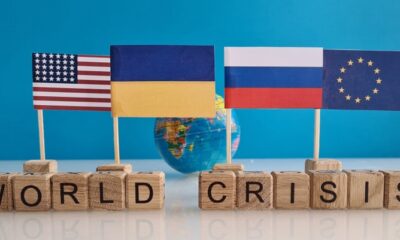Science
Wildfires Accelerate Snowmelt, Threatening Water Supplies in U.S.

Snowpacks in regions heavily influenced by snow are crucial for replenishing aquifers and ensuring streams maintain flow during the warmer summer months. However, recent findings highlight a significant shift in snowmelt patterns due to increasing wildfires, exacerbated by climate change. A new study from the Colorado School of Mines reveals that snow in burned forests melts more rapidly than in unburned areas, raising concerns for communities reliant on this vital water source.
The research indicates that wildfires, which have become more frequent and intense, are causing snow to melt earlier in the western United States. As winters warm, this trend is expected to intensify, leading to heightened environmental risks. The study identifies two primary factors contributing to accelerated snowmelt in burned forests. First, the darker snow resulting from forest fires absorbs more solar energy due to its reduced reflectivity. Second, with less tree cover, sunlight reaches the snowpack more directly, further increasing melt rates.
Climate change plays a critical role in this process. Colder winter air temperatures lead to snowpacks with higher cold content, which is defined as the energy needed to melt the snow. Throughout the winter, this increased energy threshold makes the snow more susceptible to earlier melting when the snowpack is in a burned environment.
Impact on Water Supply in Vulnerable Regions
Regions such as the Pacific Northwest and Northern Sierra Nevada are particularly vulnerable to these changes. The study highlights that 98 percent of forested areas in the western United States can expect earlier snowmelt following a fire. As average temperatures rise, a projected increase of 2°C could see 86 percent of the snow zone experiencing earlier snowmelt compared to historical averages. This shift complicates water supply management for communities that depend on seasonal snowmelt.
Utilizing data collected by NASA’s Moderate Resolution Imaging Spectroradiometer (MODIS), the study presents a stark contrast to previous research that primarily relied on ground-based measurements. It shows that the loss of snow cover post-fire is significantly more pronounced in lower elevation, warmer environments than in high-elevation, colder regions.
The findings are detailed in the journal Science Advances, under the title “Impact of current and warmer climate conditions on snow cover loss in burned forests.” These insights underscore the urgent need for adaptive water management strategies in light of changing climate conditions and increasing wildfire risks.
As communities grapple with the implications of these findings, the interplay between forest fires and snowmelt dynamics presents a significant challenge for water resource management in the years ahead. The ongoing effects of climate change necessitate proactive approaches to safeguard water supplies and mitigate the risks associated with altered hydrological patterns.
-

 World3 months ago
World3 months agoScientists Unearth Ancient Antarctic Ice to Unlock Climate Secrets
-

 Entertainment3 months ago
Entertainment3 months agoTrump and McCormick to Announce $70 Billion Energy Investments
-

 Science3 months ago
Science3 months agoFour Astronauts Return to Earth After International Space Station Mission
-

 Lifestyle3 months ago
Lifestyle3 months agoTransLink Launches Food Truck Program to Boost Revenue in Vancouver
-

 Technology2 months ago
Technology2 months agoApple Notes Enhances Functionality with Markdown Support in macOS 26
-

 Top Stories7 days ago
Top Stories7 days agoUrgent Update: Fatal Crash on Highway 99 Claims Life of Pitt Meadows Man
-

 Sports3 months ago
Sports3 months agoSearch Underway for Missing Hunter Amid Hokkaido Bear Emergency
-

 Politics2 months ago
Politics2 months agoUkrainian Tennis Star Elina Svitolina Faces Death Threats Online
-

 Technology3 months ago
Technology3 months agoFrosthaven Launches Early Access on July 31, 2025
-

 Politics3 months ago
Politics3 months agoCarney Engages First Nations Leaders at Development Law Summit
-

 Entertainment3 months ago
Entertainment3 months agoCalgary Theatre Troupe Revives Magic at Winnipeg Fringe Festival
-

 Politics1 week ago
Politics1 week agoShutdown Reflects Democratic Struggles Amid Economic Concerns




















